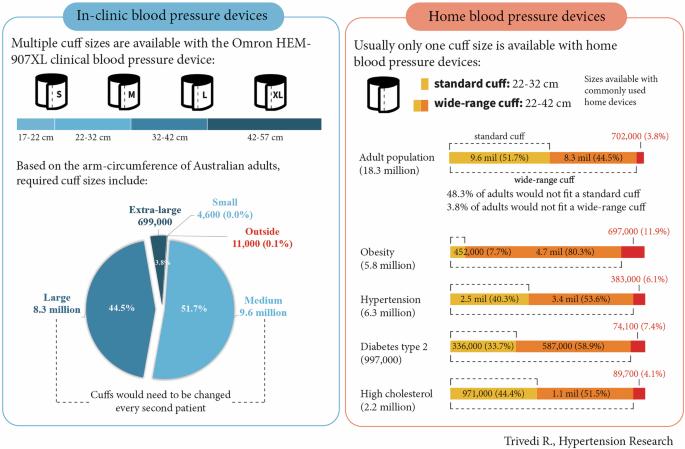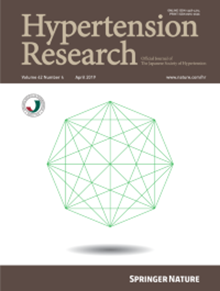Attention to blood pressure cuff sizes is important for home and in-clinic blood pressure measurement
IF 4.6
2区 医学
Q1 PERIPHERAL VASCULAR DISEASE
引用次数: 0
Abstract
Arm circumference determines appropriate blood pressure cuff size, which is critical for accurate measurements. This cross-sectional analysis aimed to assess cuff size needs according to mid-arm circumferences of Australian adults. Based on typical in-clinic cuff sizes, most Australians would require a medium (51.7%) or large (44.5%) cuff, which means that the cuff would need to be changed for almost every second patient. Most home devices are supplied with a standard (22–32 cm) or wide-range (22–42 cm) cuff, these were found to be unsuitable for 9 million adults (48.3%) and over 701,995 adults (3.8%), respectively. Concerningly, the standard cuff size available with commonly used home devices would be unsuitable for large proportions of people in higher cardiovascular risk groups (e.g. hypertension (59.7%), diabetes (66.3%), high cholesterol (55.6%) and obesity (92.3%)). This work highlights attention must be paid to selecting appropriate cuff sizes for accurate blood pressure measurements in-clinic and at home. Appropriate blood pressure cuff size is critical for accurate measurements. Most Australians require a medium (51.7%) or large (44.5%) cuff meaning the cuff needs to be changed for about every second patient. Yet most home devices are supplied with one cuff size which is not suited to over 700,000 adults.

注意血压袖带的大小对家庭和诊所的血压测量都很重要。
臂围决定了合适的血压袖带尺寸,这对准确测量至关重要。本横断面分析旨在根据澳大利亚成年人的中臂围评估袖带尺寸需求。根据典型的临床袖口尺寸,大多数澳大利亚人需要中号(51.7%)或大号(44.5%)的袖口,这意味着几乎每隔一个病人就需要更换一次袖口。大多数家用设备提供标准(22-32厘米)或宽范围(22-42厘米)袖带,分别被发现不适合900万成年人(48.3%)和超过701,995名成年人(3.8%)。值得关注的是,常用家用设备的标准袖口尺寸不适合心血管高危人群(如高血压(59.7%)、糖尿病(66.3%)、高胆固醇(55.6%)和肥胖(92.3%))的很大一部分人。这项工作强调必须注意选择合适的袖带尺寸,以便在临床上和家中进行准确的血压测量。澳大利亚成人的臂围评估袖口尺寸要求在诊所和家庭血压测量。
本文章由计算机程序翻译,如有差异,请以英文原文为准。
求助全文
约1分钟内获得全文
求助全文
来源期刊

Hypertension Research
医学-外周血管病
CiteScore
7.40
自引率
16.70%
发文量
249
审稿时长
3-8 weeks
期刊介绍:
Hypertension Research is the official publication of the Japanese Society of Hypertension. The journal publishes papers reporting original clinical and experimental research that contribute to the advancement of knowledge in the field of hypertension and related cardiovascular diseases. The journal publishes Review Articles, Articles, Correspondence and Comments.
 求助内容:
求助内容: 应助结果提醒方式:
应助结果提醒方式:


